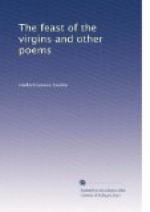[14] Mah-to—The polar bear—ursus maritimus. The Dakotas say that in olden times white bears were often found about Rainy Lake and the Lake of the Woods in winter, and sometimes as far south as the mouth of the Minnesota. They say one was once killed at White Bear Lake (but a few miles from St. Paul and Minneapolis), and they therefore named the lake Mede Mato—White Bear Lake, literally—Lake White Bear.
[15] The Ho-he (Ho-hay) are the Assiniboins or “Stone-roasters.” Their home is the region of the Assiniboin River in Manitoba. They speak the Dakota tongue, and originally were a band of that nation. Tradition says a Dakota “Helen” was the cause of the separation and a bloody feud that lasted for many years. The Hohes are called “Stone-roasters,” because, until recently at least, they used wa-ta-pe kettles and vessels made of birch bark in which they cooked their food. They boiled water in these vessels by heating stones and putting them in the water. The wa-ta-pe kettle is made of the fibrous roots of the white cedar interlaced and tightly woven. When the vessel is soaked it becomes water-tight. [Snelling’s] Tales of the North-west, p 21, Mackenzie’s Travels.
[16] Hey-o-ka is one of the principal Dakota deities. He is a giant, but can change himself into a buffalo, a bear, a fish or a bird. He is called the Anti-natural God or Spirit. In summer he shivers with cold, in winter he suffers from heat; he cries when he laughs and he laughs when he cries, etc. He is the reverse of nature in all things. Heyoka is universally feared and reverenced by the Dakotas, but so severe is the ordeal that the Heyoka Wacipee (the dance to Heyoka) is now rarely celebrated. It is said that the “Medicine-men” use a secret preparation which enables them to handle fire and dip their hands in boiling water without injury and thereby gain great eclat from the uninitiated. The chiefs and the leading warriors usually belong to the secret order of “Medicine-men” or “Sons of Unktehee”—the Spirit of the Waters.
[17] The Dakota name for the moon is Han-ye-tu-wee—literally, Night-Sun. He is the twin brother of An-pe-tu-wee—the Day Sun. See note 70.
[18] The Dakotas believe that the stars are the spirits of their departed friends.
[19] Tee—Contracted from teepee, lodge or wigwam, and means the same.
[20] For all their sacred feasts the Dakotas kindle a new fire called “The Virgin Fire.” This is done with flint and steel, or by rubbing together pieces of wood till friction produces fire. It must be done by a virgin, nor must any woman, except a virgin, ever touch the “sacred armor” of a Dakota warrior. White cedar is “Wakan”—sacred. See note 50. Riggs’ Tahkoo Wakan, p. 84.
[21] All Northern Indians consider the East a mysterious and sacred land whence comes the sun. The Dakota name for the East is Wee-yo-hee-yan-pa—the sunrise. The Ojibways call it Waub-o-nong —the white land or land of light, and they have many myths, legends and traditions relating thereto. Barbarous peoples of all times have regarded the East with superstitious reverence simply because the sun rises in that quarter.




